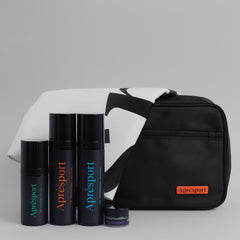Running is an excellent way to improve cardiovascular fitness, boost mood, and increase overall health. Whether you are a seasoned runner or just starting out, there are always ways to improve your speed and endurance. In this article, we will discuss various training techniques, diet tips, and other strategies to help you run faster and longer.
Run Faster
If you want to run faster, it is essential to incorporate strength training into your routine. Building strong muscles will help improve your running form and technique, ultimately enhancing your overall performance. By targeting your lower body muscles, such as your quads, hamstrings, and calves, you will see improvements in your stride length and power.
Strength Train
Resistance training exercises, such as squats, lunges, and deadlifts, can significantly improve your running speed. These exercises engage multiple muscle groups, helping to build strength and power. Aim to incorporate strength training sessions into your weekly workout routine, focusing on lower body exercises.
Workout
In addition to strength training, incorporating specific running workouts into your routine can also help you get faster. Interval training, which involves alternating between periods of high-intensity running and recovery, is an effective way to boost your speed and endurance. For example, you can do a workout where you sprint for 30 seconds, followed by a 1-minute jog, repeating this pattern for several repetitions. This type of workout helps your body adapt to faster speeds and improves your cardiovascular fitness.
Sprint
Sprinting is another effective way to increase your running speed. By incorporating short bursts of maximum effort sprints into your training, you can challenge your body to run at faster speeds. Sprinting not only improves your speed but also helps develop leg strength and power.
Interval
Interval training is a highly effective method for increasing running speed. This training method involves alternating between periods of high-intensity running and recovery. For instance, you can run at a faster pace for 1 minute and then jog for 2 minutes to recover. This pattern is repeated for multiple repetitions. Interval training helps improve your cardiovascular fitness and trains your body to sustain faster paces for longer periods.
Run Longer
In addition to aiming for faster speeds, many runners also aspire to run longer distances. Endurance is a crucial component of running, and there are several strategies to help you increase your running distance.
Endurance
Building endurance involves gradually increasing your mileage over time. Start by adding a few minutes to each run or extending your long run by half a mile every week. Consistency is key when it comes to endurance training, so aim to run regularly to build up your distance capacity steadily.
Tempo Run
A tempo run is a workout that involves running at a comfortably hard pace for an extended period. This type of workout teaches your body to sustain a faster pace for longer durations. To perform a tempo run, start with a warm-up, then run at a challenging pace for 20-30 minutes, and finish with a cool-down. Tempo runs help improve your lactate threshold and overall running performance.
Hill Sprints
Hill sprints are an excellent way to build both strength and endurance. Find a hill with a gradual incline and sprint up the hill, then jog or walk back down to recover. Repeat this pattern for several repetitions. Hill sprints challenge your cardiovascular system, strengthen your leg muscles, and improve your running economy.
Ways to Increase Running Speed
If your primary goal is to increase your running speed, there are several training techniques that can help you achieve this.
Speed Training
Speed training involves running at your maximum effort for short distances. This type of training helps your body adapt to running at faster speeds and improves your overall speed. Aim to incorporate a speed training session into your weekly routine, where you run at a near-maximum effort for 200 meters to 400 meters, followed by a recovery jog. Repeat this pattern for several repetitions.
Interval Training
We have already discussed interval training for improving speed and endurance, and it can be highly effective for increasing running speed as well. By incorporating shorter and more intense intervals into your workouts, you can challenge your body to run at faster speeds.
Speed Workout
A speed workout is a structured training session that focuses on improving your running speed. This can include a combination of interval training, tempo runs, and sprints. By incorporating a variety of speed-focused exercises into your training program, you can target different aspects of your running speed and see overall improvements in your performance.
Tips to Run Faster and Longer
In addition to incorporating specific training techniques, there are other factors to consider when aiming to run faster and longer.
Proper Diet
Your diet plays a crucial role in your running performance. Aim to consume a balanced diet that includes carbohydrates, proteins, and healthy fats. Carbohydrates provide the energy needed for running, while protein helps repair and build muscle. Additionally, staying hydrated is essential for optimal performance. Make sure to drink enough water throughout the day and before, during, and after your runs.
Form and Technique
Paying attention to your running form and technique can help you become a more efficient and faster runner. Focus on maintaining an upright posture, engaging your core muscles, and landing midfoot with each step. Avoid overstriding, as it can lead to inefficient running and increase the risk of injury. Consider working with a running coach or doing exercises that target running form to help improve your technique.
Rest and Recovery
Rest and recovery are pivotal elements in any runner's regimen, allowing your body to adapt to the physical demands of the sport. It's crucial to incorporate rest days into your training plan to stave off overtraining and minimize the risk of injuries. Sleep is another cornerstone for effective muscle repair and recovery. To further enhance your rest and recovery, consider using specialized products like our Heat Cream, Cooling Cream, and Deep Relief Gel. These CBD-infused formulations are meticulously crafted to provide targeted relief and expedite the recovery process.
Heat Cream is excellent for pre-workout preparation, warming up your muscles and joints for the run ahead. Cooling Cream is a go-to for post-run application, offering a swift, cooling solution that aids in muscle recovery and joint relief. Deep Relief Gel, with its potent 1200mg of CBD, offers a comprehensive solution for both muscle and joint discomfort, making it ideal for use both before and after your runs.
On rest days, engage in low-impact activities like yoga or swimming to maintain your fitness levels without exerting undue stress on your body. By integrating these practices and products into your routine, you're setting the stage for optimal performance and long-term athletic success.
In conclusion, running faster and longer requires a combination of specific training techniques, proper diet, and mindful recovery. Incorporate strength training, workouts, sprints, and interval training into your routine to improve speed. Focus on building endurance through gradual mileage increases, tempo runs, and hill sprints. Additionally, pay attention to your diet, running form, and recovery to support your running goals. With consistency and patience, you can become a stronger and faster runner, able to run both faster and longer distances.








